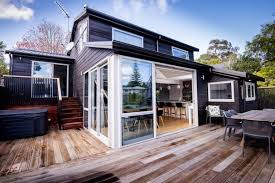House Extension option for homeowners who want to expand their living space and improve the functionality of their homes without the need to relocate. Whether you’re considering a small addition or a major overhaul knowing the basics can simplify the process and ensure a successful project.
1. Types of Extensions
House extensions can be found in a variety of forms, each serving different purposes:
Single-storey Extensions: Perfect for adding more living space, for example the addition of a bigger kitchen or new living area. These extensions typically expand outward from the side or rear of the house.
Double-Storey Extensions: They include both ground and first-floor space, making them ideal to add bathrooms or bedrooms. They can significantly increase the overall footprint of a home.
Loft Conversions: When you convert the attic space, you could build an additional bedroom or office. This is less disruptive to the existing structure but will require a high roof and a proper insulation.
The conservatories as well as the orangeries make use of lots of glass in order to make light-filled spaces, perfect for lounges or dining areas. The brickwork in orangeries is often used for more of a seamless look.
2. Planning Permission and Building Regulations
Before beginning any extension work, it’s crucial to understand local planning regulations. In a lot of cases there is a need for planning permission, especially for larger or more complex extensions. The regulations can differ based on the area you live in and so make sure you make sure to consult with your local municipality or a planning consultant.
Building regulations make sure that the construction meets safety standards. Conformity to these regulations is a requirement and covers issues such as structural integrity, insulation and fire security. An experienced architect or builder will be able to help with these regulations.
3. Design and Budget
Planning an extension to your home requires intricate design work. Think about how the space will fit with the existing structure and the way it will be used. Consult with an architect or a designer to help visualize the extension and make sure it complements the existing structure.
Budgeting is a critical element of the planning process. Costs can vary widely depending on the size of the project, the materials used, as well as the how complex the design. It’s wise to get several estimates from contractors and set aside an account for contingency expenses.
4. Choosing the Right Builder
Finding a reliable builder is essential for the success of your extension. Choose builders who have worked with extensions to homes and verify their references. Make sure they’re registered and insured. Clear communication and a well-defined contract can prevent confusion and ensure that the project remains on track.
5. Impact on Property Value
A well-planned house extension could significantly increase your property’s value. It is important to ensure that the extension is in line with the overall design and style of your home. Overly large or poorly designed extensions might not yield the ROI you’re hoping for.
In conclusion, house extensions can be a fantastic option to increase the size of your living space and increase your home’s functionality. If you are aware of the different kinds of extensions and scheduling permissions, budgeting and choosing the right professionals, you can make informed choices and get a positive result.


